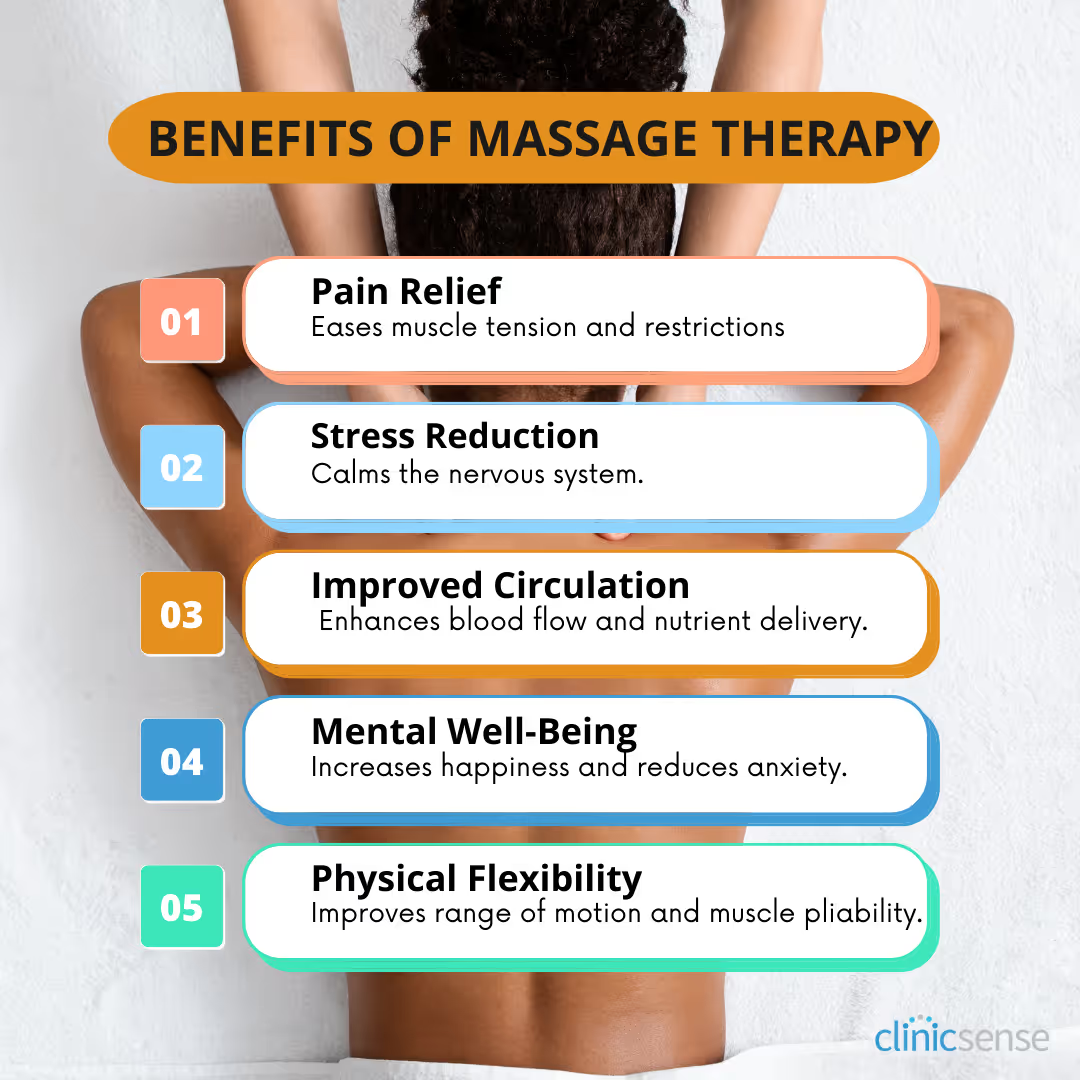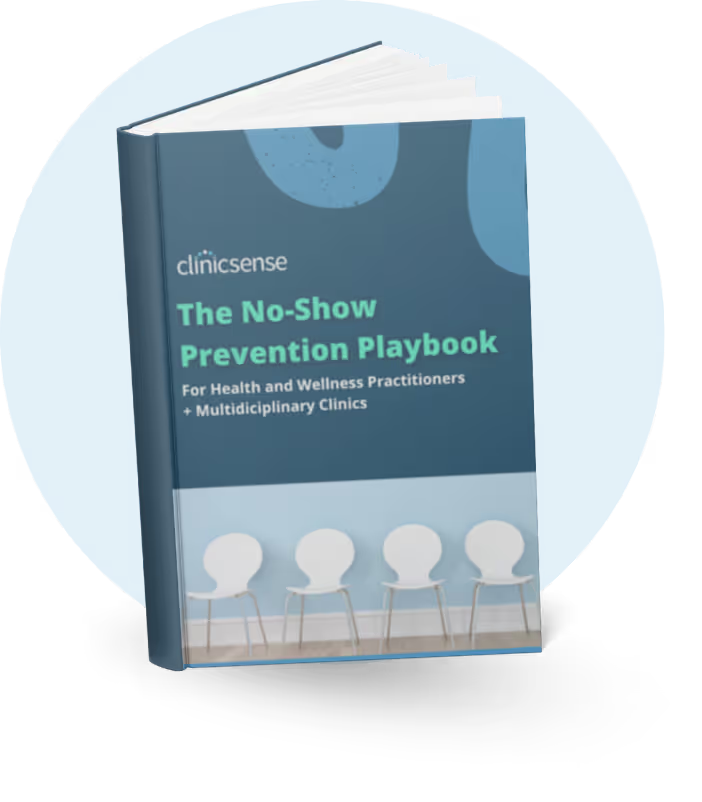Massage Therapy Business Tips
October 20, 2025

In our recent article we shared 20 physical & mental benefits of massage your clients should know; but for practitioners, the knowledge and scope of benefits goes deeper. In this article, we get down to a cellular level; emphasizing why massage therapy is such a crucial component not just for health and wellness; but for preventative health, treatment, and the healthcare system as a whole.
In this article, you will learn:
Let’s explore the proven benefits of massage therapy and how you can better convey these advantages to your clients.
Research shows the benefits of massage therapy are vast and ultimately help improve quality of life by reducing pain, decreasing stress, anxiety and depression, increasing relaxation and feel good hormones, relieving muscle tension, improving range of motion, increasing circulation and much more.
Much of the research on massage therapy at the Touch Research Institute has been conducted around neuroendocrine substances. These substances make up the body's “chemical soup” and impact how we feel, heal, and behave. Here’s what we know for sure about the proven benefits of massage on a cellular level.

Dopamine influences fine motor skills like handwriting. It enhances focus and attention, and it’s also associated with feelings of enthusiasm, intuition, and joy. People feel happier and better able to focus on specific tasks after a massage.
Serotonin allows you to maintain context appropriate behavior. It helps regulate your mood and cravings. Low levels of serotonin are linked to depression, eating disorders, pain disorders, and OCD. People feel more alive and capable of making good choices after a massage.
Epinephrine and norepinephrine (aka adrenaline and noradrenaline) impact your autonomic nervous system and the fight-or-flight response. High levels of these hormones at inappropriate times can cause hypervigilance and hyperactivity, while low levels can cause you to feel sluggish or tired. Massage helps create balance. You’ll sleep better, cope more easily, and feel a sense of calm after a massage.
Endorphins are mood lifters that support satiety and modulate pain. Therefore, massage can improve your mood, prevent you from overeating, and decrease your pain level.
Oxytocin is the bonding hormone. It’s what makes you feel connected and caring towards other people. Massage can help you relate better to your partner, kids, or family, as well as feel cared for in the moment.
Cortisol is the stress hormone. It triggers the fight-or-flight response. High levels of cortisol have been linked to an array of health issues, like heart disease, sleep issues, and bone loss. Massage increases relaxation, decreases stress and anxiety, improves sleep, as well as your overall health.

Massage impacts multiple systems in the body. It has a huge impact on the nervous system, endocrine system, cardiovascular system, and musculoskeletal system. Its effect on these systems causes positive changes to occur throughout the body, resulting in numerous health benefits.
Massage therapists manually push blood and interstitial fluid through the body. Massage gets things moving, bringing fresh nutrients to your tissues, lubricating joints, and making muscles more pliable.
Most massage techniques are designed to have a calming effect on the nervous system, inducing relaxation. However, some types of massage, like pre-event sports massage, are designed to stimulate the nervous system and get you primed to move or lift your mood.
The calming of your nervous system, manual manipulation, and increased blood flow relaxes your muscles. Releasing muscle tension often improves range of motion too. Techniques like deep tissue massage are often used to facilitate this.
Tight muscles often cause pain, especially during specific movements. Massage therapists can relieve this pain by releasing muscle restrictions. Trigger point therapy targets hyperactive areas in muscle that refer pain elsewhere. Additionally, massage calms the nervous system, improves circulation, and boosts serotonin and endorphins, all of which help reduce overall pain.
The increase of “feel good” hormones released in your body during a massage can last 48 hours. Your body continues to heal and restore even after the session is over. Sometimes, massage clients experience a “therapeutic inflammation” after massage that feels similar to muscle soreness after exercise.
Despite the soreness, therapeutic inflammation is a good thing. It’s part of the healing process and is often experienced after fascial work or deep tissue massage. It shouldn’t last more than 1-3 days, after which your muscles should feel much better than before.
During a massage, people often enter an altered state of consciousness, similar to what’s achieved in meditation. This is triggered by a release of restorative hormones and a shift in the autonomic nervous system that rarely happens while awake. After a massage, the impact of this lingers.
Many massage clients describe this sensation as a “massage buzz” because they feel kind of high and a bit out of it immediately after a massage. What happens to the brain after a massage is literally shifting gears. The parasympathetic nervous system has been running things for the last hour. That part of your nervous system generally only takes over when you’re asleep; so you might feel spacey or not alert when you first get off the massage table. Once you’re up and moving around a few minutes, that goes away.
Massage therapy is often used as a preventative treatment. When you commit to regular massage, the long-term effects include:
Massage therapy treatment plans are personalized. Massage frequency depends on individual goals. Injury treatment may require several sessions over a few weeks, while managing stress might need monthly maintenance. Goals change over time, and massage therapists create plans that fit with the dynamics of your life and circumstances.
Massage therapists use online SOAP notes or a free SOAP Note template to record the details of massage appointments, including problems, progress, and plans. Reflecting on the goals of the client and the progress that’s been made is how the frequency of massage appointments is determined.
Educate clients by discussing benefits before, during, or after sessions. Take time to talk with them, explain how massage can address their specific needs, and outline personalized treatment plans. This helps clients understand the value and encourages them to rebook for ongoing benefits.
Stay connected with clients through follow-up emails, wellness check-ins, email newsletters, and social media updates. These tools help reinforce the benefits of regular massage and keep clients engaged. Utilizing massage therapy software for SOAP notes and marketing automates and streamlines these efforts, ensuring consistent and effective communication.
Ready to take your practice to the next level? Start with a SOAP notes free trial from ClinicSense. It has everything you need to track patient progress and share the benefits of massage with your entire client list.


.avif)
.avif)
.avif)









For 14 days